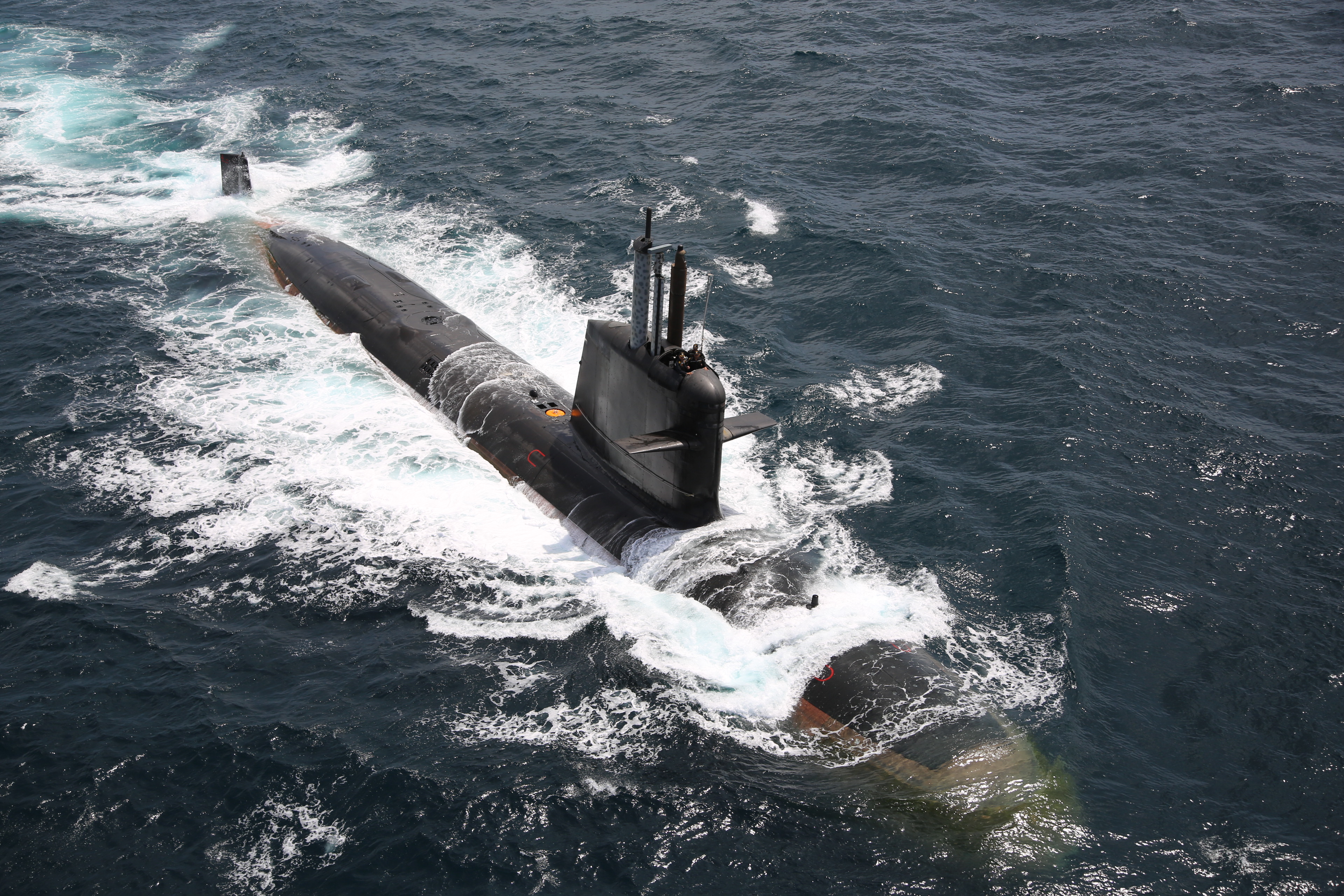Indian Navy’s undersea warfare capabilities, a vital element of deterrence and maritime dominance in the Indo-Pacific, are facing critical challenges.
While the re-induction of the Soviet-era INS Sindhukirti after refit at Hindustan Shipyard Limited (HSL) signals a capability boost, it is overshadowed by the persistent delays in integrating indigenous Air Independent Propulsion (AIP) systems into India’s frontline Scorpene-class submarines.
Together, these developments underline both the strengths and vulnerabilities of the Indian Navy’s submarine arm, raising strategic questions about underwater readiness in the face of growing Chinese and Pakistani capabilities.
What are the capability gaps in India’s frontline Scorpene fleet?
At the core of India’s submarine modernisation efforts lies Project-75, under which six French-designed Scorpene-class submarines were built by Mazagon Dock and Shipbuilders Limited (MDL).
The latest of these, INS Vagsheer, was commissioned in January 2025. Designed to be retrofitted with indigenous fuel-cell-based AIP modules, these submarines were expected to bridge the gap between conventional diesel-electric submarines and the more elusive nuclear-powered platforms.
However, the DRDO-developed AIP system is still not operationally available, missing multiple deadlines since its original target completion in 2017.
This delay means that INS Kalvari, the lead Scorpene commissioned in 2017, will complete its current refit cycle without the planned AIP upgrade. This represents a significant missed opportunity to enhance her underwater endurance and survivability.
AIP allows diesel-electric submarines to remain submerged for up to two weeks without snorkeling, a vital tactical advantage in contested waters. Without this capability, India’s Scorpenes must surface every few days, exposing them to detection, a serious vulnerability in high-threat environments.
How are India’s enemies building underwater warfare capabilities?
Meanwhile, Pakistan is on track to induct eight Yuan-class (Type 039B/041) submarines with AIP capability from China. These vessels, likely to enter service by the end of this decade, will grant Pakistan a significant leap in underwater endurance and tactical flexibility in the Arabian Sea, a theatre where India must maintain undersea superiority.
China, too, with over 60 submarines, including AIP-equipped diesel boats and nuclear attack submarines, poses a formidable presence across the Indian Ocean Region (IOR).
What is India’s current submarine fleet strength?
Compounding the issue is India’s ageing conventional submarine fleet. Apart from the Scorpenes, the Navy operates seven Russian-origin Kilo-class and four German HDW submarines, most of which are well past their mid-life.
In this context, the return of INS Sindhukirti, one of the oldest Kilo-class submarines, after a successful Rs 934 crore refit by HSL is a welcome development, albeit a temporary fix rather than a long-term solution.
Commissioned in 1990, Sindhukirti had earlier spent nearly a decade undergoing a problematic mid-life upgrade in the 2000s. This time, however, HSL has executed the refit with greater efficiency, positioning itself as a competent hub for both domestic and international submarine servicing.
With its upgraded systems and restored combat readiness, Sindhukirti will bolster India’s peacetime surveillance and operational posture, but its vintage limits long-term strategic utility.
How did HSL handle Sindukirti refit this time?
HSL’s successful handling of Sindhukirti also signals industrial momentum. It is now preparing for the refit of a Scorpene-class submarine and aims to participate in upcoming MRLCs (Medium Refit-cum-Life Certification) of the Sindhughosh class.
These capabilities are crucial as India prepares to finalise Project-75(I), under which six next-generation diesel-electric submarines with AIP and land-attack cruise missiles are to be built, a deal worth over Rs 70,000 crore that is still pending approval.
What do these mean for India’s underwater warfare capability?
India’s submarine fleet is at a precarious inflexion point. While indigenous shipyards like HSL and MDL are stepping up, the delays in deploying key technologies like AIP and the continued reliance on ageing platforms indicate a pressing need for structural reform and sustained investment.
Without swift decisions on Project-75(I), timely AIP integration, and prioritisation of indigenous development under Project-76, India risks ceding undersea dominance in the Indo-Pacific, a theatre increasingly shaped by stealth, endurance, and technological edge.
